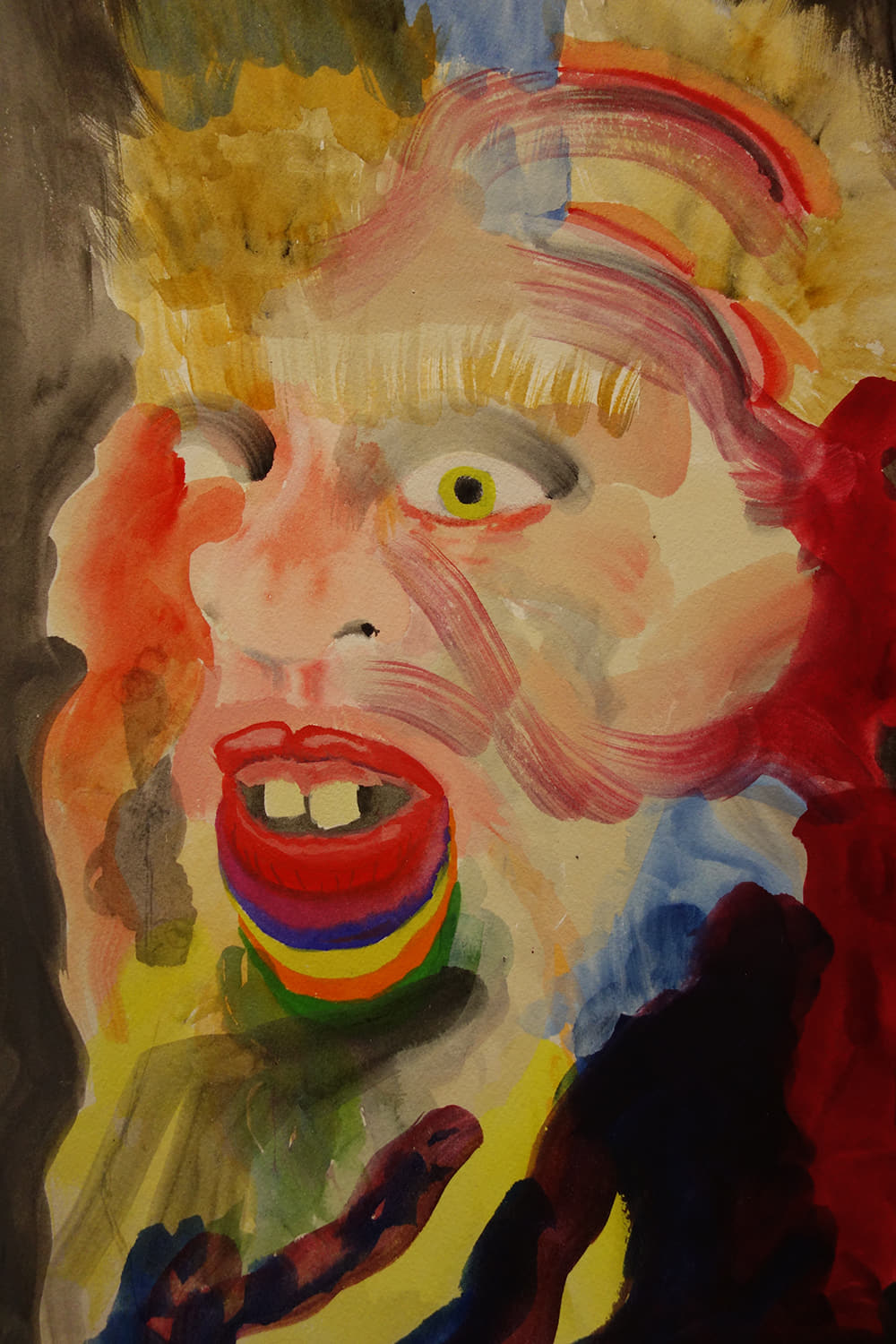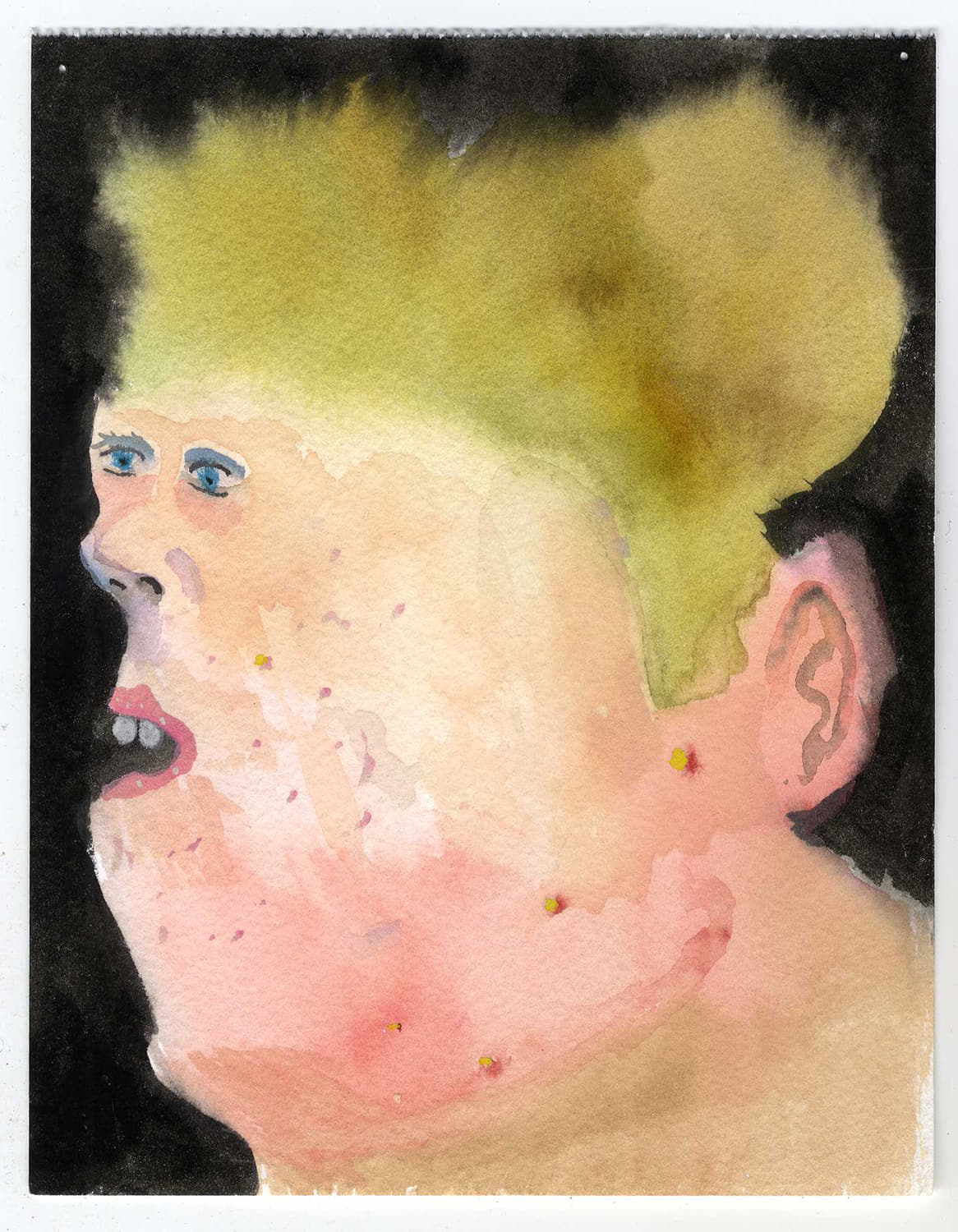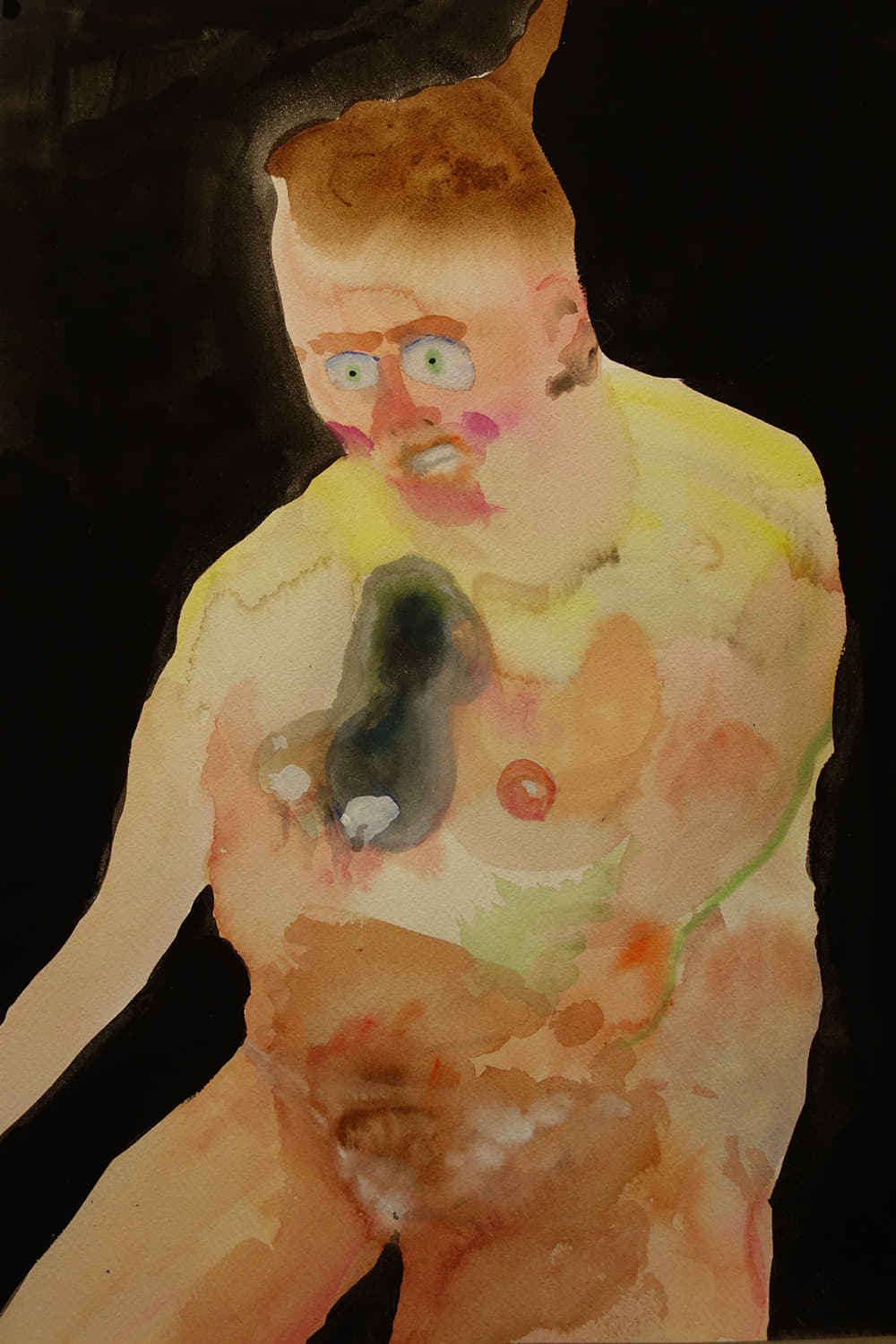“Every portrait that is painted with feeling is a portrait of the artist, not of the sitter. The sitter is merely the accident, the occasion. It is not he who is revealed by the painter; it is rather the painter who, on the coloured canvas, reveals himself.”
~Oscar Wilde, The Picture of Dorian Gray These paintings began when Patrick Phipps started thinking about Caravaggio and Dutch portraiture, which is often dark and moody. The figures emerge from a darkness as if they were on stage. These paintings are about the weirdness of human bodies and the experience of passing time. The final process of this work involves documentation of its creation via Instagram. At a certain moment, Phipps began to ask himself whether Instagram was beginning to affect his process. Was the positive (or otherwise) reinforcement beginning to change his work away from any idea of a “pure” intent? So, relating all this to social media and late high capitalism as he has, Phipps is asking, “when is enough?” And, “am I good enough?” If these questions make you uncomfortable, they should, because they make him uncomfortable; and isn’t that what art is supposed to do? Patrick Phipps has spent his life in Texas longing to be somewhere else. He received a BFA from the University of Texas and an MFA from the University of Houston. He works mostly on paper with water-based media. Houston Press critic John Devine noted of Phipps’ work in 2003 that it contains “the surprise of spontaneous invention.” While Phipps was a Core Fellow, LA critic David Pagel noted the “world-building” quality of Phipps’ work. He first became interested in art when he won a prize as a first-grader for his drawing of a red-breasted robin in the Houston Livestock Show and Rodeo.
~Oscar Wilde, The Picture of Dorian Gray These paintings began when Patrick Phipps started thinking about Caravaggio and Dutch portraiture, which is often dark and moody. The figures emerge from a darkness as if they were on stage. These paintings are about the weirdness of human bodies and the experience of passing time. The final process of this work involves documentation of its creation via Instagram. At a certain moment, Phipps began to ask himself whether Instagram was beginning to affect his process. Was the positive (or otherwise) reinforcement beginning to change his work away from any idea of a “pure” intent? So, relating all this to social media and late high capitalism as he has, Phipps is asking, “when is enough?” And, “am I good enough?” If these questions make you uncomfortable, they should, because they make him uncomfortable; and isn’t that what art is supposed to do? Patrick Phipps has spent his life in Texas longing to be somewhere else. He received a BFA from the University of Texas and an MFA from the University of Houston. He works mostly on paper with water-based media. Houston Press critic John Devine noted of Phipps’ work in 2003 that it contains “the surprise of spontaneous invention.” While Phipps was a Core Fellow, LA critic David Pagel noted the “world-building” quality of Phipps’ work. He first became interested in art when he won a prize as a first-grader for his drawing of a red-breasted robin in the Houston Livestock Show and Rodeo.



